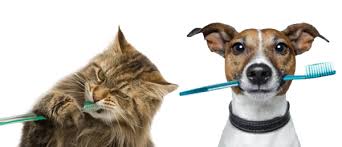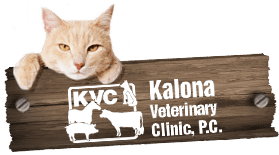So, what’s the big deal?
The American Veterinary Medical Association sponsors National Pet Dental Health Month every February in order to help spread awareness and prevent avoidable health issues. Dental health doesn’t just affect your pet’s mouth. Dental problems can be a result of underlying health problems and even cause new ones. Periodontal disease is the most common disease and dental condition seen in dogs and cats. In fact, by age 3, 70% of cats and 80% of dogs have some form of periodontal disease. If left untreated, it can spread infection to major organs including the heart and kidneys and suddenly become life threatening.
What to Look For?
The decline in your pet’s dental health starts with the buildup of plaque that hardens into tartar. Tartar above the gum line can often easily be seen and removed, but plaque and tartar below the gum line is damaging and sets the stage for infection. Contrary to popular belief, bad breath is NOT NORMAL and is one of the first noticeable symptoms of dental disease in cats and dogs. Other signs to look for:
- Red or inflamed gums
- Plaque and tartar buildup
- Chipped or fractured teeth
- Difficulty chewing/dropping food
- Reluctant to eat/weight loss
- Pawing or rubbing at mouth
***Always be careful when trying to examine your pet’s mouth, a painful animal may bite***
Treatment
Dental disease does not heal or go away on its own and will only worsen if left untreated. The treatment of periodontal disease involves a thorough dental cleaning like a trip to the dentist. All teeth are ultrasonically scaled, polished and probed. Extractions are necessary when there are retained baby teeth, if any teeth are broken or fractured, if there is a tooth that is loose and especially if there is a receding gum line and root exposure.
Why the Anesthesia?
Anesthesia is the safest and most efficient way to provide dental care to animals. With the option to run pre-anesthetic blood work to test organ function we can ensure that your pets are healthy enough to undergo the procedure. Although anesthesia will always have risks, it is safer now than ever and continues to improve. The benefits of anesthesia far outweigh the risks and not just in dental procedures.
The Take Away
Pets are just like people and need routine dental exams, cleanings and care. Providing your pet with good dental hygiene can add 2-4 years to its life. Get your pet’s teeth and gums checked at least once a year and always notify the clinic if you notice any of the signs listed above. Regularly brushing your pet’s teeth is the single most effective thing you can do to keep their teeth healthy between dental cleanings and may even reduce the frequency for periodic dental cleanings. Be sure to only use toothpaste and products designed for pets. Human toothpaste has too much fluoride and can be toxic to pets.
Already know how to brush your pet’s teeth? Awesome! Don’t know? Check out this video for a step by step tutorial on starting a routine and some tips and tricks for a smoother start.
https://www.youtube.com/watch?v=wB3GIAgrTPE#action=share
For a product list approved by the Veterinary Oral Health Council, follow the link below
http://www.vohc.org/all_accepted_products.html
Combining good dental hygiene at home with preventive veterinary dental care can help your pet live a longer, healthier, and pain free life while saving you money in the long run. Schedule your pet’s appointment and professional cleaning! 10% discount offered now through the end of the month.
Happy National Pet Health Month!






